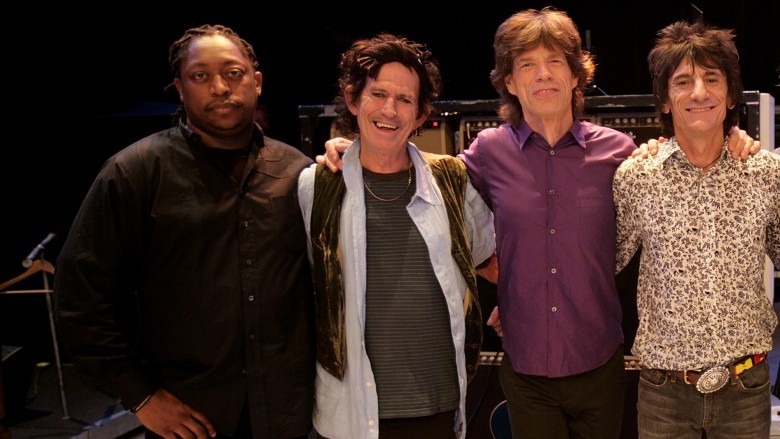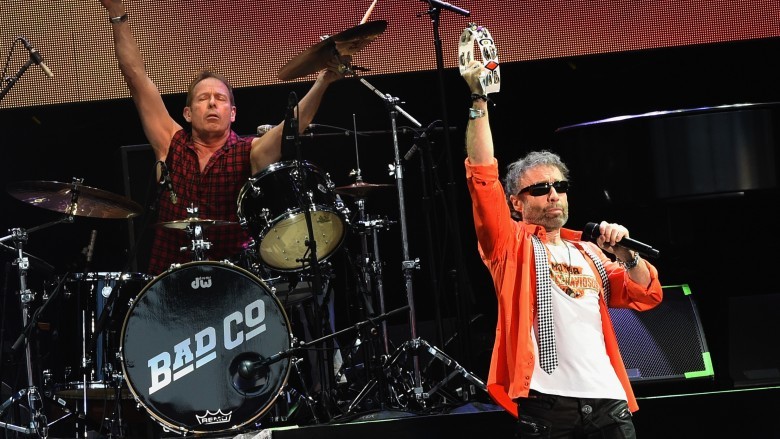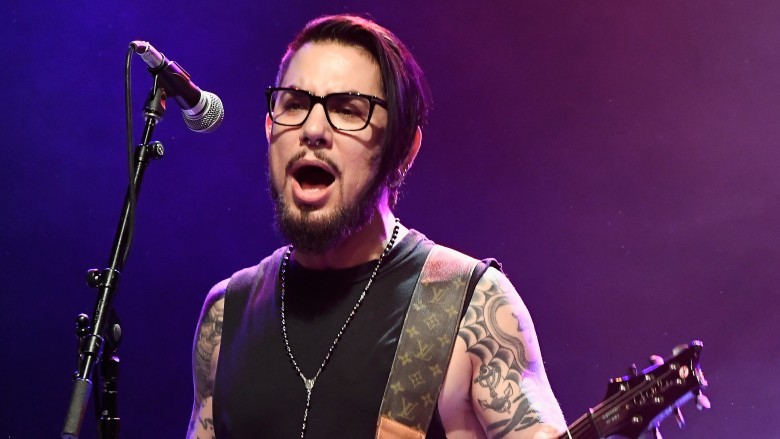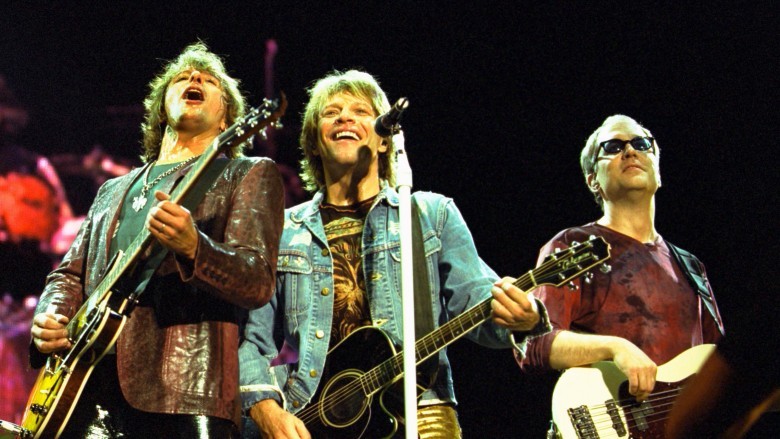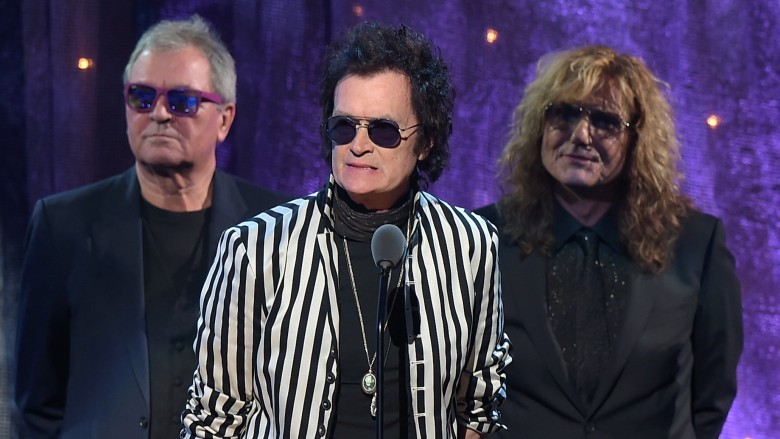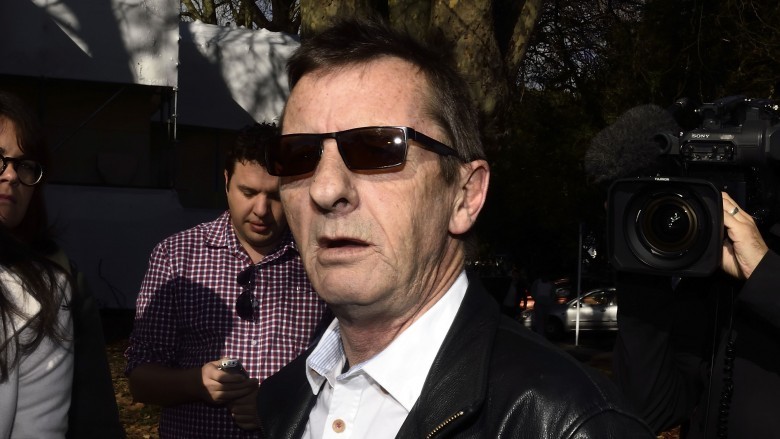Band Members Famous Bands Want You To Forget About
Sex, drugs, rock n' roll ... and fragile egos. That's what being in a band is truly all about. A successful band can last years and safely navigate the loss and addition of new members. Except that sometimes, the band so hates their departed partner in crime that they do everything they can to erase his existence. Sometimes, they even do it to a current member because he's literally not cool enough
Brian Howe and Robert Hart, Bad Company
If you're going to judge this '70s supergroup's success by how many of its songs are endlessly played on classic rock radio stations, then the band's early to-mid-'70s heyday was definitely its commercial peak. Combining the singing talents of Free singer Paul Rodgers and drummer Simon Kirke with Mott the Hoople guitarist Mick Ralphs and King Crimson bassist Boz Burrell, the group's six albums in the initial Rodgers era of 1973 to 1982 all went gold or better and led to still inescapable hits like "Can't Get Enough," "Feel Like Makin' Love," "Rock 'n' Roll Fantasy," and the cleverly titled "Bad Company."
But with the early '80s came the death of '70s-style arena rock and the band took a break ... for four years, only to regroup with new singer Brian Howe, best known for collaborating with and putting up with Ted Nugent as the vocalist in his band. He stayed with the band, playing a lot of county fairs and the like, until 1998, when a guy named Robert Hart took over. Rodgers returned to the band in 2002, and all was right in Bad Company world again.
Still, despite other guys fronting the band from 1986 to 2002—a period of 16 years, almost twice as long as Rodgers's first stint—Bad Company would like you to pretend those less fruitful years never happened at all. The Bad Company website includes an exhaustive history of the band, except it makes no mention of Brian Howe or Robert Hart.
Dave Navarro, Red Hot Chili Peppers
The funky punk wahoos from California (a fact they have mentioned in nearly all of their songs) have had a lot of guitarists over their three decades plus of shirtless mayhem. After original guitarist Hillel Slovak died of a heroin overdose in 1988, Parliament/Funkadelic member DeWayne McKnight joined the group briefly, only to be replaced with John Fruiscante. Then he left, and then so did another couple of axe-slingers, before the band hired former Jane's Addiction guitarist Dave Navarro, who played on just one album, One Hot Minute, and brought a darker, gothier edge to songs like "Warped" and "My Friends." He left in 1998 in the most punk way possible: through a press release by Peppers singer Anthony Kiedis, who said the split was "a completely mutual parting based on creative differences."
Well, maybe not though, because when the Red Hot Chili Peppers entered the Rock and Roll Hall of Fame in 2012, they left Navarro off the list of officially enshrined band members. The band's lawyer (so punk!) claimed to Billboard that Hall officials told him only original, current, and those members who played on more than one album were eligible. Kiedis blew off criticism, saying that Navarro will probably get in with Jane's Addiction someday, if he's lucky.
Mitch Malloy, Van Halen
Depending on who you ask, Sammy Hagar was either fired from or quit Van Halen in 1996 after 11 years as the singer of the band. With him gone, the band recruited David Lee Roth, the guy Hagar replaced. But the same egos that led to Roth leaving the band in 1985 clashed anew in 1996, and after Roth recorded a couple of songs for a Van Halen greatest hits record, he was out of the band again.
Van Halen needed a new singer, and since this was 1996, Craigslist wasn't really that viable yet. Fans will know that ex-Extreme singer Gary Cherone quickly became the lead of Van Halen ... except that he's the fourth Van Halen lead singer. After Roth, then Hagar, then Roth again, but before Cherone, was a guy named Mitch Malloy, a rock singer with a moderately successful solo career who had both the pipes and long blonde hair necessary to join Van Halen. While he recorded some music with the remains of Van Halen, Malloy ultimately turned down the offer to front Van Halen because after the very public Hagar/Roth debacle, "it was clear to me that there was something amiss."
Then Van Halen found Gary Cherone. And then they recorded a single album with him, 1998's Van Halen III, before dismissing him in favor of touring with both Roth and Hagar, and ultimately recording the studio album A Different Kind of Truth in 2012 with Roth.
Peter Criss, KISS
In the '70s, a KISS concert offered a little something for everyone. Bassist Gene Simmons would thrill crowds with his fire-breathing and blood-spewing, singer Paul Stanley would sing about how he wished to rock and roll all night and party every day, and drummer Peter Criss would be left alone on stage to sing along to an orchestral backing track on the very un-KISS ballad "Beth." It's the band's biggest hit, and it's not even sung by one of the main guys. But Simmons and KISS singer Paul Stanley are co-frontmen of their hard rock kabuki clown endeavor both onstage and off: they own the band and control all of its business decisions, including hiring and firing. While Criss says he quit the band in 1980, Stanley and Simmons say he was fired.
A similar ambiguity casts a shadow on the comings and goings of another KISS member, guitarist Ace Frehley. Stanley once said about the two that "they were instrumental in what we created as a team, but they became impossible and intolerable, on more than one occasion." (Simmons has publicly called Criss "a drug addict.") Part of the gig then for Criss's replacement, Eric Carr, was doing "Beth," a song Criss wrote without anybody else in the band. He'd do the tender solo singalong at concerts, and in 1988, the band went so far as to have Carr re-record the vocal track of "Beth" for inclusion on a greatest hits album—with the same old orchestral track Criss had used. A fine KISS-off to Criss.
Geoff Nicholls, Black Sabbath
Things that are metal: power chords, songs about the devil and going crazy, and Ozzy Osbourne. Black Sabbath had all of those things, but they also had the rather un-metal element of ... a keyboard player.
His named was Geoff Nicholls, and he was a very skilled musician. And while Nicholls was a full-time, regular, longtime member of Black Sabbath whose parts were well heard on every Sabbath record recorded between 1980 and 1995, it just wasn't metal to have a keyboardist. So he either played on a keyboard set up backstage, out of the view of the audience, or on a wing of the stage, partially out of view of the audience.
Hugh McDonald, Bon Jovi
The official bass player for Bon Jovi throughout the '80s and all the way to 1994 was Alec John Such, a guy who, like the rest of the band, had glorious golden locks and big white teeth. Such was not the first bassist for Bon Jovi, nor was he the last. He also wasn't even the only bassist in Bon Jovi when he was in Bon Jovi.
When Jon Bon Jovi was getting his music career going in the early 1980s, he released a single called "Runaway." He hadn't assembled a permanent band yet, and a session musician named Hugh McDonald played bass on the track. But when Bon Jovi put together the band that would remain largely unchanged for the next decade and change, he didn't hire McDonald but Alec John Such. Why not McDonald?
Well, McDonald was ten years older than the rest of the band and thus not quite teenage-girl-bedroom-poster material. But while McDonald wasn't an official member of the group, and Such was, it would seem that he's the guy who played on Bon Jovi's albums—not Such. McDonald is credited on the 1992 Bon Jovi album Keep the Faith, and McDonald's now-defunct website listed nearly all of Bon Jovi's albums in the discography section. McDonald is credited on Bon Jovi albums after Such left the band in 1994 ... and he finally became an official member in 2016.
David Coverdale, Deep Purple
Deep Purple is best known for "Smoke on the Water," a song that's on classic rock radio 12 times a day and contains the first riff anybody ever learns to play on the guitar. They formed in the late '60s, and after a few breaks are still active today.
As is usually the case with a band that's been around for half a century, there have been a lot of lineup changes. They've had more lead singers than most bands have hit songs: Rod Evans, Glenn Hughes, Joe Lynn Turner, Ian Gillan, and David Coverdale. Gillan is arguably the most recognizable voice of Deep Purple because he sang on "Smoke on the Water." But his replacement, David Coverdale, is the most famous overall, as he fronted the band Whitesnake, '80s hair metal stalwarts who hit No.1 with "Here I Go Again." (That's the one with the video of Tawny Kittean writhing around on the hood of a car.) And yet the biography section of the Deep Purple website includes no mention of Coverdale whatsoever, and he was the singer of the band for three years.
Darryl Jones, The Rolling Stones
In 1992, bassist Bill Wyman left the self-proclaimed "world's greatest rock n' roll band" after more than 30 years. His successor, an accomplished jazz bassist named Darryl Jones, has now been with the Stones for almost as long ... and yet he's rarely in official photographs and sometimes not even in the band's music videos. At the big bows at the end of Stones concerts, he retreats into the background with other hired touring musicians while the "real" band members Keith Richards, Mick Jagger, Ron Wood, and Charlie Watts take center stage.
But Jones is more than a touring musician—he's the bassist on almost every Stones recording since 1994. What gives? Jones isn't an official member of the band. He's a hired gun—a well-salaried hired gun, but a hired gun nonetheless.
Phil Rudd, AC/DC
AC/DC is on indefinite hiatus following singer Brian Johnson retiring from touring due to health problems, bassist Cliff Williams's reluctance to tour, and Malcolm Young suffering from dementia. In the website's section labeled "The Band," all those guys are listed, along with longtime guitarist Angus Young (the one who dressed like a schoolboy well into his fifties), along with singer Bon Scott (who died in 1980), and even Stevie Young, Malcolm Young's nephew and successor, and Chris Slade, who drummed for the band in the early '90s and on the band's 2015 tour.
Curiously, nowhere on that roster is Phil Rudd, the guy who kept rhythm for the hard rock legends for the better part of 40 years. What did he do? Well, a couple of years ago he was sentenced to eight months of house arrest in New Zealand for meth possession and threatening to kill a guy. The good news: The charge that he had tried to hire a hitman was dropped.
